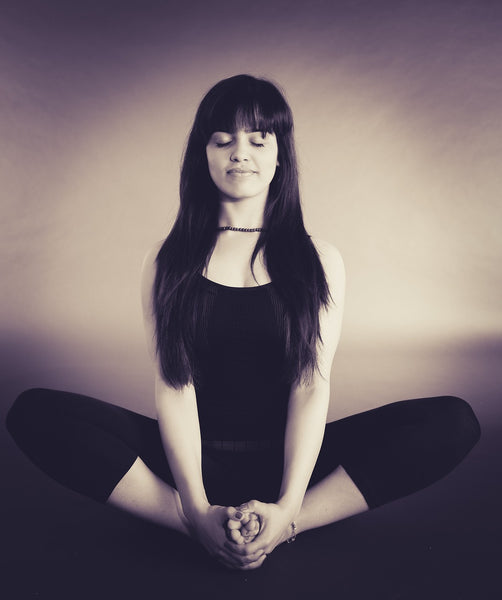There are many benefits to practicing yoga. These include greater flexibility, improved mobility, core strength, release of muscle tension, stress reduction, and the list goes on.
Another significant physical benefit to the yoga practice is spinal health. This is a specific area of the body in which yoga can provide the same flexibility, mobility, tension release, and strength as in the other parts of the body. When one practices yoga with attention paid to the spine, one can improve their posture, alignment, and increase muscle strength.
Spinal Health
Why is spinal health important? Well, as we age, muscles tend to lose their suppleness. They also may stiffen over time if there is a lack of bodily movement to keep them supple and strong. Further, the bones in the body may even become more brittle and weak over time.
When it comes to spinal health, there are yoga poses that are designed to both lengthen and strengthen the muscles along the spine and in the broader back region. These postures can contribute to greater general health and longevity, not only for your back and spine, but for your entire body.
Let’s first take a look at the simple anatomy of the human spine.
1. The Lumbar Spine
An area to focus on is the lower back: the lumbar spine. This area of the back and spinal column can undergo quite a bit of overuse over the years. Standing, sitting and bending over are repetitive movements in the body that can weaken the lower back muscles and spinal region. People often report experiencing lower back pain as they age. Yoga can help with strengthening this part of the body to help relieve some of that pain and likewise improve posture, strength, and alignment.
2. The Thoracic Spine
This is the mid-back region. This part of the spine helps to hold the rib cage in place as it protects the heart and lungs. Naturally, this part of the spine has limited mobility, but one still wants to have strength in this area in order to stand upright and to continue to protect those vital organs. An abnormal curve in the thoracic spine can result in a “hunchback” formation. Again, yoga can be a healthy choice of exercise to reduce the possibility of forming that undesired spinal curve.
3. The Cervical Spine
This is the neck region of the spinal column and has the greatest range of motion. Not only does the cervical spine have the responsibility of holding up your head, but it allows you to rotate your head side to side and nod your head up and down. Having a healthy cervical spine is important for those necessary head movements.
How Can Yoga Help with Spinal Improvement?

Generally, practicing yoga can help you strengthen muscles in your body, increase your range of motion and mobility, stretch and lengthen tight or inhibited parts of the body, and yoga helps you to relax and ease your mind and body.
Holding yoga postures requires a certain amount of muscle engagement as a way to stabilize your body. One of the areas you engage in yoga is your core: your abdominal system. In yoga, it’s called Uddiyana Bandha or the Abdominal Lock. When you inhale, you allow the sensation of breath to rise to fill up your lungs.
As you exhale, you lightly engage or contract your abdominal muscles. It creates a lock or supportive feeling in order to stabilize your body. In doing so, you also provide support for your spine, particularly the lumbar spine.
When you engage these particular muscles, you are activating the rectus abdominis muscles (the “six-pack” outer layer of muscles of the abdominal system), your obliques (the side portions of the abdominal wall), and the transverse abdominis muscles, most supportive lower region of the ab system.
Your core muscles play a large part in supporting your spine. When these lower regions are strengthened, you create a solid foundation for better posture and alignment.
When you move your body in a yoga class and transition from one pose to the other, you access the entirety of the active, mobile system. The complimentary effects of breathing, blood flow, muscle engagement, and skeletal movement help you to maintain and even enhance the suppleness throughout the body required for functional movement.
An active body is a healthy body. A yoga practice helps you to move your entire body so that you do not become stagnant and stiff from too much sitting or lack of exercise. With a continued practice, you can become more limber and agile. This is particularly true for your spine; you move in ways that will activate a greater range of motion throughout the entire spinal column.

Some yoga postures stretch the muscles in your body. Many yogis report having stiff lower backs and tight hamstrings. They often come to the practice with the intention of gaining more flexibility in these areas. Often when there is a lack of movement, the muscles of the body weaken and shorten.
In other circumstances, overworked muscles may lead to a tight, bound-up feeling in these areas. Stretching these parts of the body is essential to foster continued overall health. This is also true for spinal health. The muscles that support the spine need the same amount of stretching in order to keep your spine doing its main job of supporting your frame.
And finally, yoga helps you to relax.
After you have moved your body during a yoga practice, engaged muscles to support your body, and stretched your tight limbs, the practice ends with a full body rest. Savasana (or Corpse Pose) is the last posture often practiced at the end of your yoga session. It symbolizes completion and the time to rest your body that you have just worked. It is complimentary to everything you have done up to this point.
Attending a Meditation Class, Restorative Yoga Class, or a Yin Yoga Class will offer the benefit of relaxation and release for your overworked, stressed body (check online for local availability). When your body is less tense, everything else in your system works more efficiently: your circulatory system, muscular system, and your skeletal system.
Let’s now take a look at some specific yoga poses that will benefit each section of your spine for continued spinal health.
Yoga Poses for Your Lumbar Spine
Cat Pose & Cow Pose
These are actually two poses that connect together through a short series of movements. It will target both the lower back and the low abdominal region. The benefit of the fluid motion is to bring mobility, flexibility, and strength to these areas.
Here’s how you do it. Start by coming down to your hands and knees. Your shoulders should be directly over your wrists and your hips over your knees. Inhale and gently lift your head while at the same time arching your back. Your pelvis will tilt back. You will create a backbend-type formation in your body. This is Cow Pose.
Exhale and tuck your chin toward your chest, allow your back to round, pull your bellybutton up toward your spine, and tuck your pelvis under. This is Cat Pose.
When you draw your navel up toward your spine, you actually engage your abdominal muscles. Repeat the flow for 5-10 breaths. The entire movement of the body through these two poses also creates a sense of fluidity in this lower region of the body.
Yoga Poses for Your Thoracic Spine
Upward Facing Dog

This posture is often practiced while moving through the classic Sun Salutation. But when you pause to examine the posture, you can bring good mobility to the trunk of the body. You can start the pose lying on your stomach: legs extended behind you, belly and chest touching the floor, and your hands placed up near your chest. Your arms should bent at a 90 degree angle for proper leverage when you eventually rise into this backbend.
As you inhale, create a lengthening sensation throughout your body: point your toes, engage your legs, and feel as if you’re gently pulling yourself forward as you grip your palms into your yoga mat.
As you exhale, press directly down into the mat to press your torso upward. Lift until your arms are straight. (Your shoulders should be directly aligned over your wrists with plenty of space between your shoulder and ears.) Rise until your pelvis also lifts off the floor. You are moving into a backbend. Continue to lift your upper body until your chest is facing forward. Your focus is also forward.
It is fine to keep your knees on the mat in this posture, but the full expression of the pose would suggest pressing the tops of your feet into the floor so that your knees lift up slightly. Roll your shoulders back so that your chest is proud.
Although this is a backbend yoga posture, the nature of the pose creates an expansion in the rib cage that lends to more mobility and strength in this area.
Seated Twist

Another movement that will reflect well on a healthy thoracic spine are twisting postures. Sit comfortably on your yoga mat with your legs crossed. Sit up nice and tall to experience a full extension of your spine.
To set up for a twist, start by placing your right hand on your left knee and your left hand behind you on the floor at the base of your spine. Inhale and press your left hand into your mat to assist a further lengthening of your spine.
As you exhale, slowing and carefully rotate your torso toward your left knee. Hold the posture for 5-10 breaths and repeat on the other side.
You don’t need to over rotate the body to gain the full benefit of this twisting pose. The movement lightly stretches the muscles in the lower back and up the spinal column. A healthy spine is one that can functionally twist with a good range of motion and strength.
Yoga Poses for Your Cervical Spine
Practice the same postures above and focus on the tilt and rotation of the neck. In the Cat & Cow Flow, your head nods up and down: it lifts up in Cow Pose and tilts downward in Cat Pose. This is great for good mobility in the cervical spine area.
In a Seated Twist Pose, the rotation focuses on the mid-spine, but you can add a turn of your head toward your shoulder. Again, the movement of the head and neck side-to-side further results in a healthy spine.
In A Nutshell

As you can see, there are some general yoga poses you can practice that will effectively benefit the strength, mobility, and longevity of your spine all the while improving your posture and alignment.
Tip: To help relax and strengthen your spine further, please consider adding foam rollers to your yoga workout (see the benefits of using foam rollers here).




